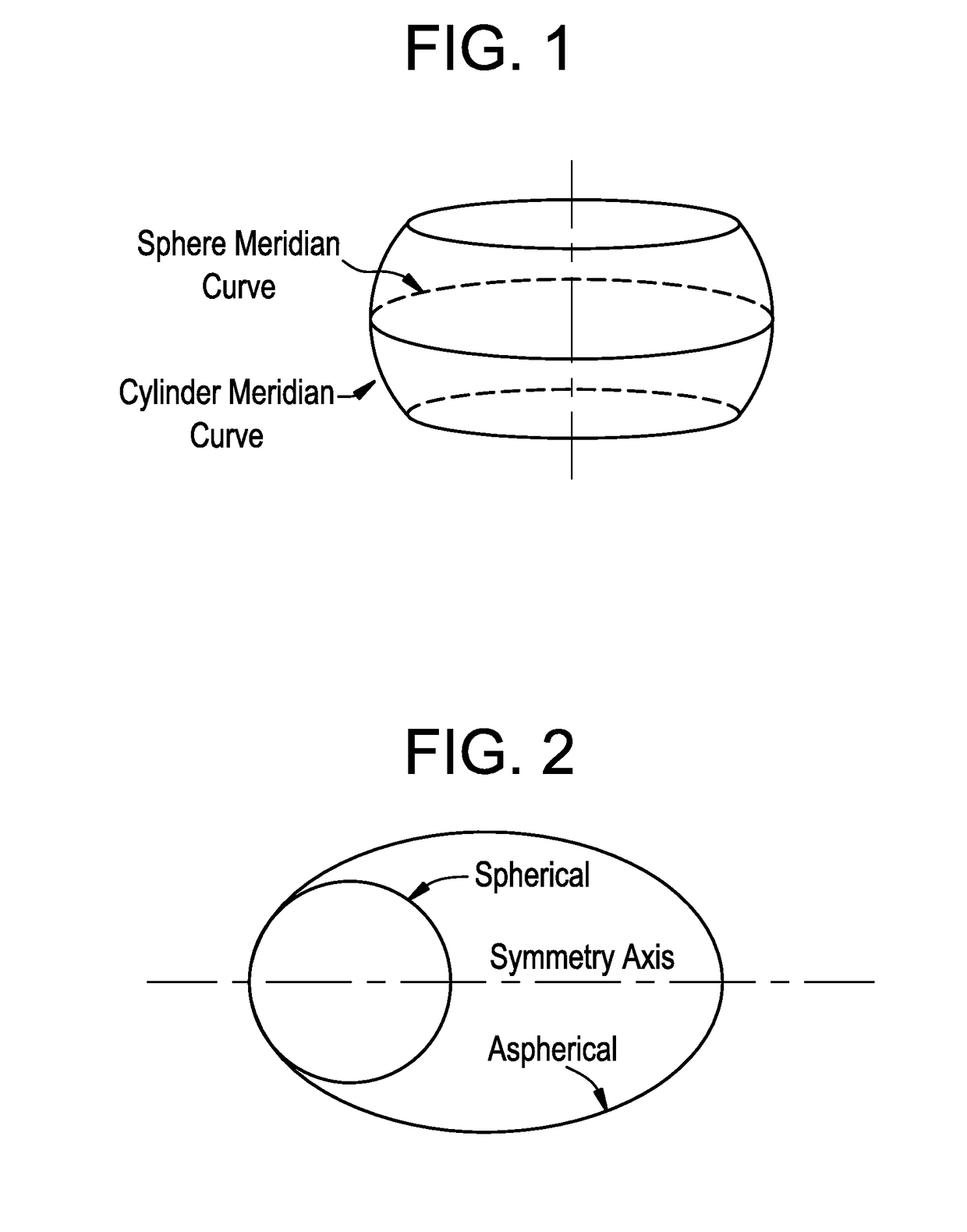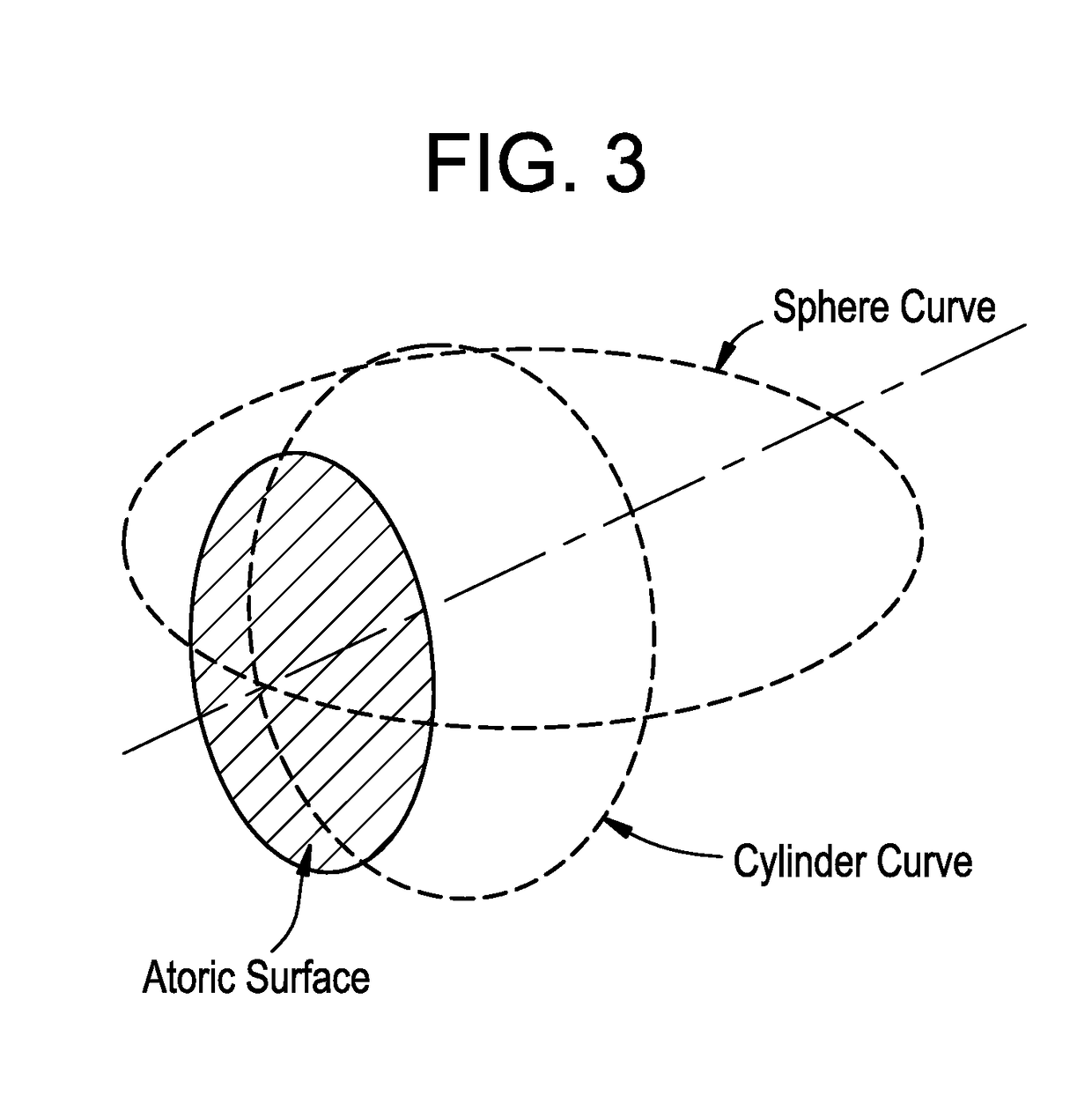Atoric Surfaces to Minimize Secondary Astigmatism in Contact Lenses for the Correction of Astigmatism
a technology of astigmatism correction and atoric surface, which is applied in the field of ophthalmic devices, can solve the problems of reducing the patient's retinal image quality and therefore their perceived quality of vision, affecting the overall vision of patients, and not providing a consistent visual experience to all patients, so as to achieve the effect of reducing secondary astigmatism and improving and consistent vision performan
- Summary
- Abstract
- Description
- Claims
- Application Information
AI Technical Summary
Benefits of technology
Problems solved by technology
Method used
Image
Examples
examples
[0031]As an example, a clinical data set referenced herein as the salmon data represents a data set taken across 10 sites, as described in “Normal-eye Zernike coefficients and root-mean-square wavefront errors,”J Cataract Refract Surg. 2006 December; 32(12):2064-74. The salmon data includes patient information such as gender, age, OD / OS, and other variables. The data represents measurements comprising spherical refraction, cylinder refraction, cylinder axis, and Zernike (pupil).
[0032]In accordance with aspects of the present disclosure, and based upon analysis of the salmon data, wavefront data was fitted along two meridian directions, resulting in the following equations for the two meridians:
θ1=a tan(Z(2,2) / Z(2,−2)) / 2
θ2=θ1+pi / 2
[0033]Along each meridian direction, a quadratic equation was employed for fitting the data:
SA(θ1)=c1(θ1)+c2(θ1)*P(θ1)+c3(θ1)*P(θ1)2
SA(θ2)=c1(θ2)+c2(θ2)*P(θ2)+c3(θ2)*P(θ2)2
2nd astigmatism=SA(θ1)−SA(θ2)
[0034]As such, to correct secondary astigmatism, a lens...
PUM
 Login to View More
Login to View More Abstract
Description
Claims
Application Information
 Login to View More
Login to View More - R&D
- Intellectual Property
- Life Sciences
- Materials
- Tech Scout
- Unparalleled Data Quality
- Higher Quality Content
- 60% Fewer Hallucinations
Browse by: Latest US Patents, China's latest patents, Technical Efficacy Thesaurus, Application Domain, Technology Topic, Popular Technical Reports.
© 2025 PatSnap. All rights reserved.Legal|Privacy policy|Modern Slavery Act Transparency Statement|Sitemap|About US| Contact US: help@patsnap.com



